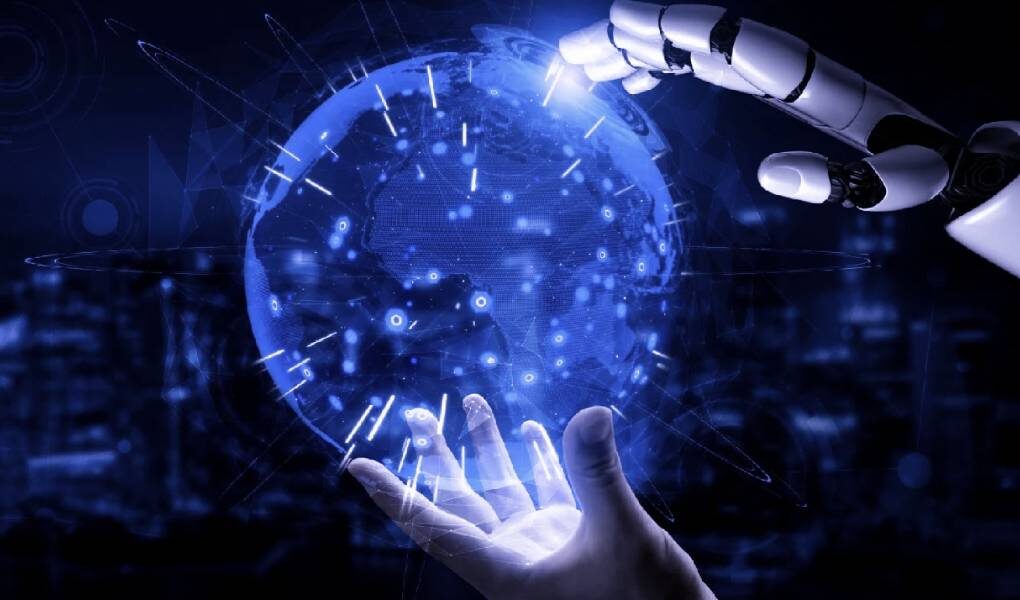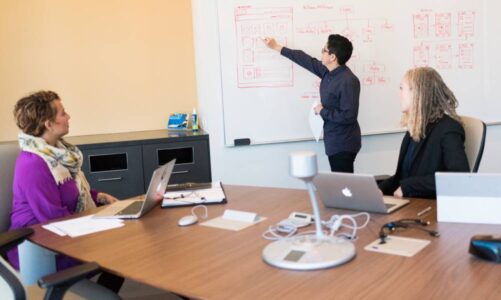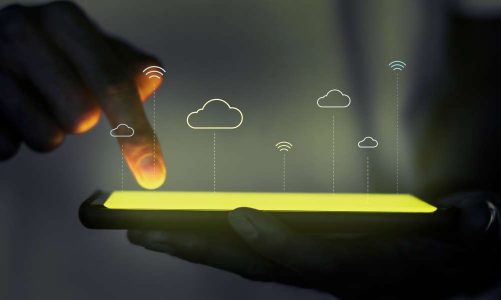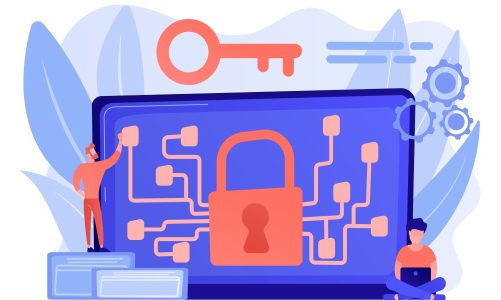Has the next industrial era already begun? From the EU Commission to the most recent theories, here’s what Industry 5.0 is and what (positive) impact it will have on industry and workers
Cars, electricity, computers, the internet… And now are we ready for Industry 5.0? Yes, because after the first industrial revolution and the others that followed, the next era/revolution is already envisioning which, in theory, promises benefits both to workers and to businesses.
This was reported by the European Commission which presented last January a dedicated document “ Industry 5.0: towards a sustainable, human-centric and resilient European industry ”. The focus shifts from shareholder value to stakeholder value and puts worker well-being at the center of the production process and uses new technologies to deliver prosperity beyond jobs and growth while respecting the planet’s production limits.
“Making Industry 5.0 a reality isn’t just a nice thing to do. Industries must adapt, evolve and embrace the green and digital transition to remain competitive and remain engines of prosperity, ”it writes.
The EU Commission is fully aware that industry is the major contributor to the European economy, in economic and employment terms. Between 2009 and 2019, it consistently accounted for around 20% of the EU’s GDP, with manufacturing, in particular, adding around 14.5% to the value of the European economy, which is the second-largest globally in nominal terms, after the United States, and the third in terms of purchasing power parity, after China and the USA.
But what does Industry 5.0 mean? What is the difference with 4.0? What are the expected benefits? Let’s go then to answer below.
Table of Contents
Industry 5.0: What It Is And What Are Its Characteristics
Some define it as the re-humanization of the automation race. Who, on the other hand, thinks that Industry 5.0 is about people who work together with robots and intelligent machines, who help humans work better and faster by exploiting advanced technologies such as the Internet of Things and big data, adding a human “touch” to the pillars of Industry 4.0 of automation and efficiency.
According to Marina Ruggieri, IEEE fellow and telecommunications lecturer at the University of Rome Tor Vergata, the Industry 5.0 paradigm will be based on the pervasiveness of three main pillars: connectivity, knowledge, and intelligent sensing.
As for the European Union vision, version 5.0 completes the Industry 4.0 paradigm, highlighting research and innovation as drivers for a transition to a sustainable, human-centered, and resilient European industry. “Industry 5.0 is capable of benefiting industry, workers, and society.”
n the dedicated study, the EU Commission focuses on concepts such as the human-centric approach, sustainability, and resilience. Regarding the first concept, it wants to highlight that technology must be used to adapt the production process to the needs of the worker. It also means ensuring that the use of new technologies does not interfere with workers’ fundamental rights such as privacy, autonomy, and human dignity.
As for sustainability, a strong emphasis is on the circular economy and energy efficiency, in particular, while resilience refers to the need to develop a higher degree of robustness in industrial production, better arming it against interruptions and ensuring that can provide and support critical infrastructures in times of crisis.
Industry 5.0 And The Previous Phases
But why are we talking about Industry 5.0? Because it is the fifth fundamental step, the fifth industrial revolution after the first was
defined by mechanization through water and the power of steam, the second had at its center the concept of mass production and was characterized by electricity, together with iron and steel; the third, on the other hand, saw the rise of computers and automation.
Industry 4.0 is characterized by connection and digitization, the creation of truly intelligent factories with cyber-physical systems and communication through the Internet, and even more specifically the Internet of Things. Industry 5.0 takes the next step, which consists of exploiting the collaboration between increasingly powerful and precise machinery and the unique creative potential of the human being.
Some argue that the pandemic has accelerated the rise of robotics, digitization, and the start of Industry 5.0. Like Industry 4.0, which focuses on the use of artificial intelligence (AI), Big Data, and IoT, version 5.0 incorporates these systems and increased human intelligence.
The main difference between the fourth and fifth industrial revolutions is that the latter seeks to foster a more balanced working relationship between increasingly intelligent technologies and humans. Rather than humans competing with robots for jobs, as feared with the arrival of Industry 4.0, humans are now imagined collaborating more and more with them.
Hence perhaps the most representative element, on a technological level, of this virtuous interaction between man and machine will be the robots, collaborative robots, integrated into industrial processes for more repetitive and banal tasks, providing humans with greater opportunities to use their creativity. creative.
The Difference Between Industry 4.0 And links With Society 5.0
Industry 5.0 has its roots in the concept of “Industry 4.0”, a term coined in Germany in 2011, which in its ten years of life has focused on digitization and AI-driven technologies to increase efficiency and flexibility of production. The concept of Industry 5.0, on the other hand, emphasizes the importance of research and innovation to support the industry in its long-term service to humanity within the boundaries of the planet.
A more precise definition is offered by Prasanna Lohar, Head of Innovation at DCB Bank: “If the current revolution emphasizes the transformation of factories into intelligent IoT-enabled structures that use cloud computing and interconnection, Industry 5.0 is destined to focus on the return of human hands and minds to the industrial structure “.
From this focus on the human element and on people, Industry 5.0 is linked to Society 5.0, a term born in Japan and which is based on the concept of “Society” in it, how people ensure their livelihood is directly linked to the way they build their society. Society 5.0 seeks to balance economic development with solving social and environmental problems.
It is not limited to the manufacturing sector but faces wider social challenges based on the integration of physical spaces and physical and virtual spaces. Quella 5.0 is a society where advanced computer technologies, the Internet of Things, robots, artificial intelligence, and augmented reality are actively used in daily life, industry, healthcare, and other spheres of activity,
The Impact Of Industry 5.0 On People And Companies
Having described the characteristics, it is necessary to understand the impacts that Industry 5.0 can produce. First of all, notes the European Commission, one of the most important paradigmatic transitions that characterize the 5.0 model is the shift of attention from technology-driven progress to a human-centric approach.
This means leaving no one behind and has a number of implications, relating to a safe working environment, respect for human rights, and the skills required for workers.
One of the fears associated with the adoption of new technologies is the loss of jobs. However, if applied correctly, technological progress and dedicated solutions potentially make workplaces more inclusive and safer for workers, as well as increasing their job satisfaction and well-being.
Eurostat data on workplace accidents indicate that the top three sectors in which accidents occur are precisely those where the dangerous and tiring tasks of workers could be automated with relative ease.
Robots could handle a variety of repetitive and simpler tasks, helping to rely on safer work environments. The potential of robotic technology is far from being exhausted, especially when powered by artificial intelligence. AI-based technologies, as well as virtual and augmented reality tools, can be used to guide the worker to perform more specialized tasks, which otherwise require specific skills and training. This could also open up opportunities to introduce more people with reduced mental abilities into the workplace.
Industry 5.0 benefits workers as well as companies. The benefits to the industry are vast, ranging from improved talent attraction to energy savings, to increase overall resilience. The overall benefit for European industry is long-term: continued competitiveness and relevance by successfully adapting to a changing world as well as new markets.
In the short term, the required investments could expose European industries to the risk of temporarily losing competitiveness compared to those that are not yet investing in Industry 5.0. It will be crucial to thoroughly time and coordinate investments to mitigate this risk.
Also Read: Manufacturing Sector Management: Between Tradition And Innovation



